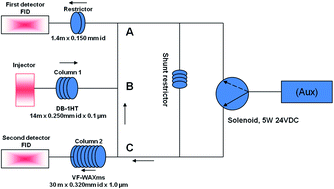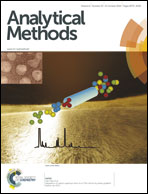Characterization of selected oxidation inhibitors in transformer oils by multidimensional gas chromatography with capillary flow technology
Abstract
Oxidation inhibitors such as 2,6-ditertiary-butyl-para-cresol (DBPC, also known as butylated hydroxytoluene) and 2,6-ditertiary-butyl phenol (DBP) are used in transformer oils to prevent radical auto-oxidation of hydrocarbon species in the oil, prolonging the transformer's life. Routine monitoring of these compounds is recommended as a diagnostic tool for measuring the health of the transformer. Typically these compounds are analyzed by spectroscopic methods or gas chromatography with extensive sample preparation steps. A multidimensional gas chromatographic method using a Capillary Flow Technology (CFT) planar microfluidic device and a Deans switch is demonstrated to analyze these compounds in the oil matrix. The two oxidation inhibitors are separated from the matrix on the analytical column and can be easily identified and distinguished from each other. Practical limits of detection were established at 25 ppm (w/w) of each inhibitor, which are well below warning and action limits of these compounds. These compounds produced a linear calibration curve over the concentration range found in transformer oils. Relative standard deviations of area for each compound were determined to be below 1.5% at the 95% confidence level (n = 10).


 Please wait while we load your content...
Please wait while we load your content...